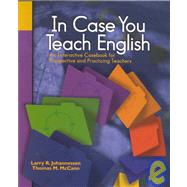
Larry R. Johannessen is an Associate Professor of English at Northern Illinois University, where he teaches English education classes and literature courses primarily dealing with the Vietnam War. He holds a B.A. from California State University at Hayward, California, and an M.A.T. and Ph.D. from the University of Chicago. He taught high school English and history for 10 years. In addition to chapters in books, he has contributed over 40 articles to scholarly journals. He is author of Illumination Rounds: Teaching the Literature of the Vietnam War (Urbana, IL: National Council of Teachers of English, 1992) and co-author of two popular NCTE publications: Writing About Literature (Urbana, IL: National Council of Teachers of English, 1984) and Designing and Sequencing Prewriting Activities (Urbana, IL: National Council of Teachers of English, 1982). He is listed in Who's Who Among America's Teachers and Who's Who in American Education. His current research is in the areas of teacher knowledge and thinking, particularly for preservice and novice teachers; secondary school English curriculum and instruction; literacy learning; and the literature and film of the Vietnam War. He lives in Wheaton, Illinois, with his wife, Elizabeth Kahn.
Thomas M. McCann has taught English in a variety of school settings, including 8 years in an alternative school. He holds a B.A. degree from Northern Illinois University DeKalb, Illinois; an M.A. from Southern Illinois University, Carbondale, Illinois; an M.A. from Saint Xavier University, Chicago; and a Ph.D. from the University of Chicago. He has published articles in Research in the Teaching of English, the English Journal, the Illinois English Bulletin, and California English. With Peter Smagorinsky and Steve Kern, he is the coauthor of Explorations: Introductory Activities for Literature and Composition, 7-12 (Urbana, IL: National Council of Teachers of English, 1987). He has taught for 4 high schools, 2 colleges, and 3 universities, where he worked with preservice and practicing teachers in graduate education programs. He has supervised teachers in high school for 20 years. As a department chair at Community High School in West Chicago, Illinois, he teaches English and supervises other English teachers. He also serves as an adjunct professor of English at Elmhurst College, Elmhurst, Illinois. He has collaborated with Larry Johannessen on research about the concerns of teachers during their formative years of teaching. He lives in Elmhurst, Illinois, with his wife Pamela and daughter Katie.
The New copy of this book will include any supplemental materials advertised. Please check the title of the book to determine if it should include any access cards, study guides, lab manuals, CDs, etc.
The Used, Rental and eBook copies of this book are not guaranteed to include any supplemental materials. Typically, only the book itself is included. This is true even if the title states it includes any access cards, study guides, lab manuals, CDs, etc.